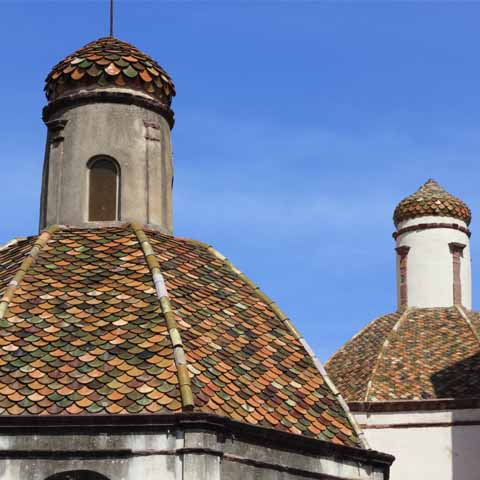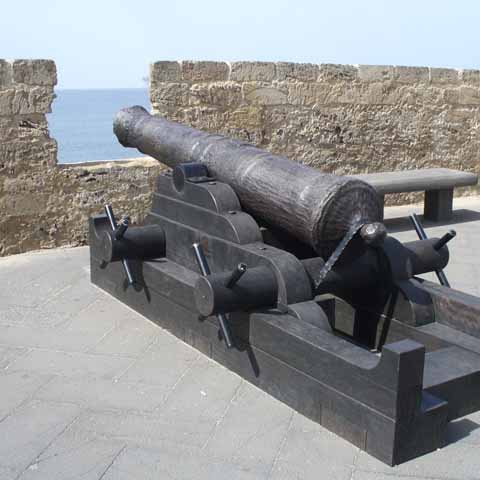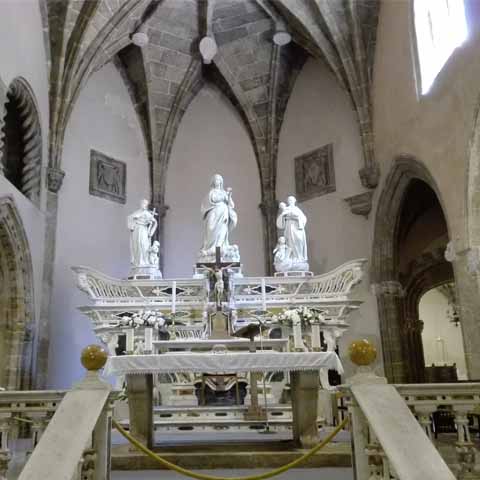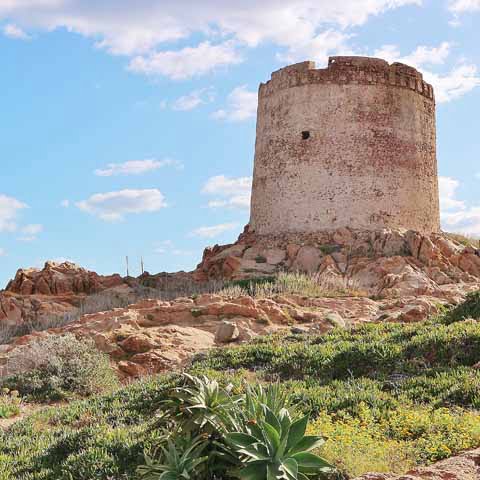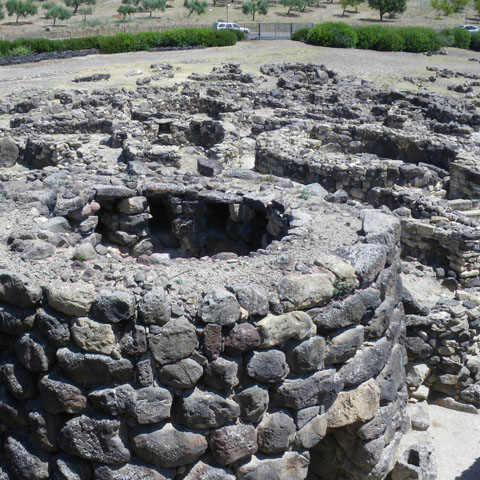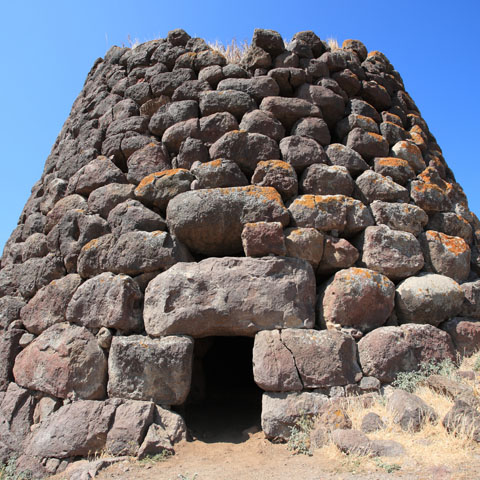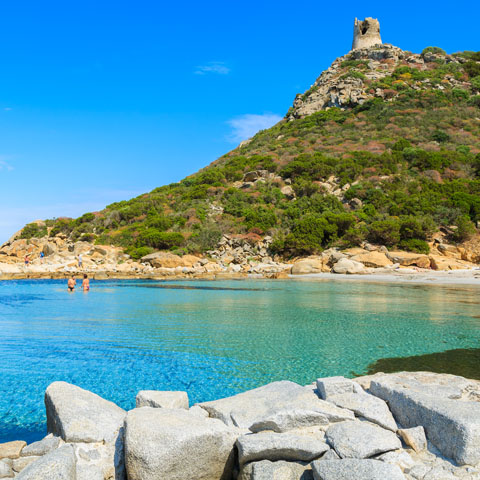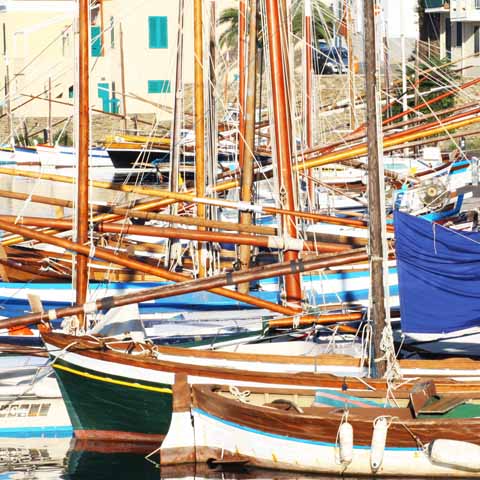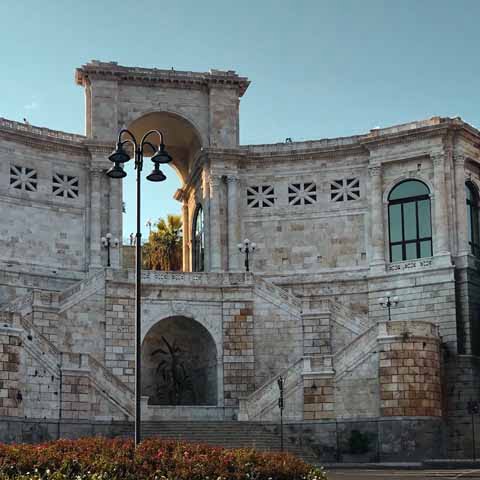Sardinia History Travel Guide
Sardinia is the second largest island in the Mediterranean after Sicily, and it occupies a strategic position.
Located in the middle of the trade routes towards the western Mediterranean, the region has always been a tactical-military point of reference, and also a pillar for the geopolitical balance of the area.
But its strategic position didn’t always bring wealth to the region. In the course of its history, the island has been a target of pirate raids and subject to numerous attempts of conquest. These events have shaped the character of the region and accentuated its autonomy. Despite its insularity, Sardinia has turned its back on the sea and focused on the development of a predominantly rural society.
Although an important node for the maritime trade, Sardinia is hard to define as a maritime region.
Commerce in the region has always been managed more by foreigners than by natives, while the locals have always been more concerned in preserving their traditions, lifestyle, and culture. This is based on the uniqueness that defines and distinguishes Sardinia from the rest of Italy.
The Italian name, Sardegna, derives from the Latin Sardinia, a term used since the classical antiquity and by which the island is still known today in many regions of the world. Sardinia derives from the Sardinians, a group of peoples who inhabited the area.
But the name is not the only thing Sardinia preserved from the past. The complex local language, the Sardinian, is a Romance language that captivates the linguists as it’s the closest dialect to Latin. And, scattered throughout the territory, the region also preserved testimonies of its troubled history.
Prehistory of Sardinia
For a long time, it was believed that Sardinia wasn’t inhabited before the Neolithic age, due to its geographic isolation from the peninsula during the Pleistocene. However, following archaeological research in the late 70s, there have been numerous complexes discovered that have been attributed to the Lower Paleolithic era. Interesting sites include the Sa Coa de Sa Multa near Laerru, which is typologically linked to a peninsular evolution.
Other noteworthy artifacts were discovered in the area of Anglona, on the northern side of the island.
Along the Riu Altana river and in Laerru-Pantallinu basins were excavated and unearthed some remains from the Middle Paleolithic eras, including evidence of the Sa Pedrosa-Pantallinu industries.
The Upper Paleolithic era is poorly documented and only a few generic artifacts belonging to the Epigravettian have been reported in Corbeddu cave, near Nuoro.
The obsidian deposits played an important role in documenting the Neolithic period. The most important findings were excavated in Mount Arci, an area known for its vast trade relations with the surrounding regions.
Moreover, research conducted at the end of the twentieth century allowed the reconstruction of the development of the Neolithic facies of the island. The Ozieri era, in the second half of the fourth millennia BC, is characterized by a rich culture evidenced by the hypogeal sepulchers.
The culture of Ozieri marked the beginning of the evolution of the island. In fact, from that moment on,
Sardinia was included in the trade circuits and in the exchange routes that involved both the western and the eastern Mediterranean. The strong influence of the bell-shaped facies attributed to the Eneolithic and the numerous Mycenaean bronze fragments found on the island are standing testimonies of these events.
Moreover, numerous fragments of Sardinian vases were also found in Crete. Dated to the same period, they further attest the intense commercial relations of the region with the surrounding territories.
History of Sardinia
The second millennia BC marks the beginning of history in Sardinia with the appearance of the nuraghe,characteristic stone dwellings scattered throughout the territory, defining the island’s rural landscape.
These dwellings were often surrounded by large villages, wells, sacred monuments, and other elements typical of a complex society.
Within the context of the relations that Sardinia had with the Aegean world, a particular place was occupied by the Mycenae and Cyprus. The impressive development of the island in the early Iron Age is a consequence of the intense trade practiced with the Etruscans.
Between the seventh and sixth century BC, the Phoenicians took the place of the Etruscans in the economy of the island and implemented a plan of commercial and territorial expansion. In this period the settlements of Caralis were founded, which developed into the future Cagliari, Nora, Sulcis, and Tharros.
The Phocian civilizations tried to occupy the region and founded Olbia, but their penetration in Sardinia was stopped by the Etruscans and Carthaginians. The latter occupied the whole coastal area and a great part of the inland, establishing their dominion.
Although interested in the territory’s potential, Rome renounced to trade in the island as a result of a treaty with Carthage stipulated in 348 BC. Yet, in the third century BC, the struggle for hegemony over the Mediterranean caused a clash between the two major powers of the era, the Romans and the Carthaginians. Sardinia was involved and the treaty ceased.
In 238 BC, a revolt of mercenaries against Carthage offered Rome the pretext to send some legions to the island. Winning against the strenuous Sardinian and Carthaginian resistance, the Romans established themselves in the region in 226 BC, associating Sardinia with Corsica in a sole territorial administration.
Rome entrusted the government of the two islands to a magistrate who could freely exert full civil and military powers.
The central power of Rome continued to treat the island as a land of conquest for a long time, without granting liberty to the municipalities throughout the whole Republican Age. This caused numerous revolts, among which the most noteworthy was the one organized by the Carthaginian Amsicora in 215 BC.
Although the end of the second century BC marked the end of the riots, the resistance against the Roman Empire continued to manifest itself in the territory, and Sardinia witnessed the uprising of the phenomenon of banditry.
In an attempt to put an end to the struggles, Caesar granted Roman civil rights to Cagliari while Porto Torres, Tharros, and Sulcis became Roman colonies.
During the Imperial Age, Sardinia was separated from Corsica and governed by the Senate as a Roman province. This slowly Romanized the island, although the locals maintained their culture, traditions, and habits.
At the end of the third century AD, Diocletian implemented a reform which included the province in the jurisdiction of Rome. Sardinia remained under Roman jurisdiction until the dissolution of the Empire, and in 455 the island became a maritime base of the Vandals.
Between 533 and 534 the island was conquered by the Byzantines, following the victory of Belisarius. The suffocating Byzantine rule aggravated the decadence of the island while favoring the Christianization of the inhabitants. The Christianization was completed in 594 by Gregory the Great.
Under Gregory’s monasticism, Sardinia remained protected from new raids until the beginning of the eighth century when the Muslim threat touched its shores, causing the separation from Byzantium.
Nevertheless, the Saracen attacks didn’t materialize into a stable dominion perhaps because of the conquest of Sicily.
With the disintegration of the Byzantine dominion, at the end of the seventh century, the power was attributed to four “giudicati” namely the municipalities of Cagliari, Arborea, Torres, and Gallura. The ninth century brought a profound institutional transformation in the region, based on principality and characterized by a heavy dynastic policy centered on matrimonial alliances.
This policy allowed Barisone, giudicato of Arborea, to extend his control over the whole island. However, his attempt to unify the four regions failed and the following period brought serious anarchy. This caused clashes between the various powers controlling Sardinia, above all between the Genoese, who ruled Torres, and Pisa, who controlled Cagliari and Gallura.
The Giudicato of Arborea benefitted from the struggles and regained its prestige and political weight. Now governed by Mariano de Serra Bas, Arborea became a powerful ally of Pisa in 1265.
In 1297, Pope Boniface VIII gave the island to James II of Aragon. Yet, the Aragon dynasty only took possession of the island in 1323 when Alfonso imposed his feudal orders. The despotism of the newcomers and the attachment to the autonomy of the locals aroused profound resentment in the population.
The first municipality to rise against the Aragon was Sassari, followed by other centers and supported by Genoa, Pisa, and Lunigiana, but they only succeeded to regain control over the western strip of the island.
In 1395 a set of laws know as Carta de Logu were promoted by the Aragon and subsequently extended to the whole territory. Yet, the dominion of the Aragon didn’t become more tolerable and this caused severe riots.
After the failure of the last revolt that ended with the defeat of the Sardinians in 1478, the island passedunder the Spanish rule and entered in a long period of decline.
In fact, Ferdinand the Catholic stifled the autonomy of the local authorities, granted supremacy to the Spanish nobility and hindered the contacts with the peninsula. The Spanish administration implemented a process of transition to the Spanish language and traditions.
The oppressive Spanish presence separated Sardinia from Italy, making the island unaware of the cultural and political processes of the Renaissance and Humanism.
Following the Spanish succession war, Sardinia returned within the confines of Italy from a historical point of view. The treaties of Utrecht and Rastatt from 1713 and 1714 assigned the territory to Austria, who in 1718 ceded it to the Savoy under the Treaty of London.
Assuming the title of king of Sardinia, Vittorio Amadeo II of Savoy committed to recognize and respect all the privileges, statutes and laws in force on the island. However, even if in a subtle way, he succeeded to suppress or change some elements of the Spanish legal system.
This marked the beginning of reforms intended to revive the economy and reorganize the administrative and legal powers. The persistence of the feudal structures reawakened the feelings of autonomy in 1789, after the French revolution, and led to the outbreak of anti-feudal movements.
The riots maintained an economic and social character, rather than a political one, and were directed against the feudal lords instead of the sovereignty of the Savoy.
In Sardinia, the Restoration coincided with a revival of the reforming initiatives, reinvigorated by the actions of Carlo Alberto. During his reign, the feudal regime was suppressed, and the island was united with Piedmont in 1847. However, the reform didn’t change much for the poor economic and social situation of the island.
In 1820, due to continuous conflicts between shepherds and farmers fueled majorly by the structure of the territory, the administration gave anyone who was in possession of a land the right of fencing it. This process fueled arrogance and crime in its typical form of banditry linked to the pastoral world, and also inoculated a profound skepticism against the State.
The twentieth century opened with popular revolts, but the greatest upheaval occurred after the First World War when the veterans gathered in fighting the movement of the Sardinian Action Party. This determined Italy to grant autonomy to the territory.
The fascist regime implemented itself in the region with important interventions that shaped the aspect of the landscape, such as the construction of artificial basins for irrigation and electric plants. Touched marginally by the Second World War, the region focused its efforts on the reconstruction of the nation, and in 1949 Sardinia won its special status of an autonomous region, establishing its capital in Cagliari.
Archeology of Sardinia
Archaeology is well represented in Sardinia, and the site of Monte d’Accoddi in Sassari preserves some of the most remarkable artifacts from the Mesopotamian era.
Among the most interesting remains of the ancient Sardinian cultures are the so-called “domus de janas”, which are hypogeal sepulchers from the Neolithic age excavated in rock walls and formed by one or more chambers. The most grandiose complex is Sant'Andrea Priu, near Bonorva.
The most typical aspect of the nuraghe civilization dates back to the Middle Bronze Age and includes a number of dwellings, primitive villages and ceramic artifacts, megalithic tombs, and temples. Some of the most noteworthy complexes are Santa Cristina in Paulilatino, Sa Testa in Olbia, and Santa Vittoria near Serri. Moreover, numerous nuraghe are scattered throughout the region.
The region is also rich in bronze pieces, depicting warriors, animals, deities, and objects of worship. These primitive forms of art depict the Sardinian civilization and are extremely important from an archaeological point of view.
In their characteristic style and far from the canons of the classical antiquity, there are also many artifacts depicting geometrical shapes and naturalistic motifs.
Evidence of early civilizations is also present in the numerous sanctuaries, fortifications, and necropolises where statuettes, amulets, and other worship objects have been discovered.
Sardinia also retained particular characteristics from the Roman period. Two of the most important archaeological sites are Nora and Tharros. Roman monuments are present in both locations but also in other areas of the island, and include thermal baths and spa complexes, temples, amphitheaters, and necropolises.
Among the museums, perhaps the most noteworthy is the National Archaeological Museum in Cagliari, but other fascinating museums include the National Archaeological and Ethnological Museum in Sassari, Antiquarium Turritano in Porto Torres, and the Civic Archaeological Museum in Ozieri.
Travel Guides
The Sardinia Region of Italy
The Cities of Sardinia, Italy
